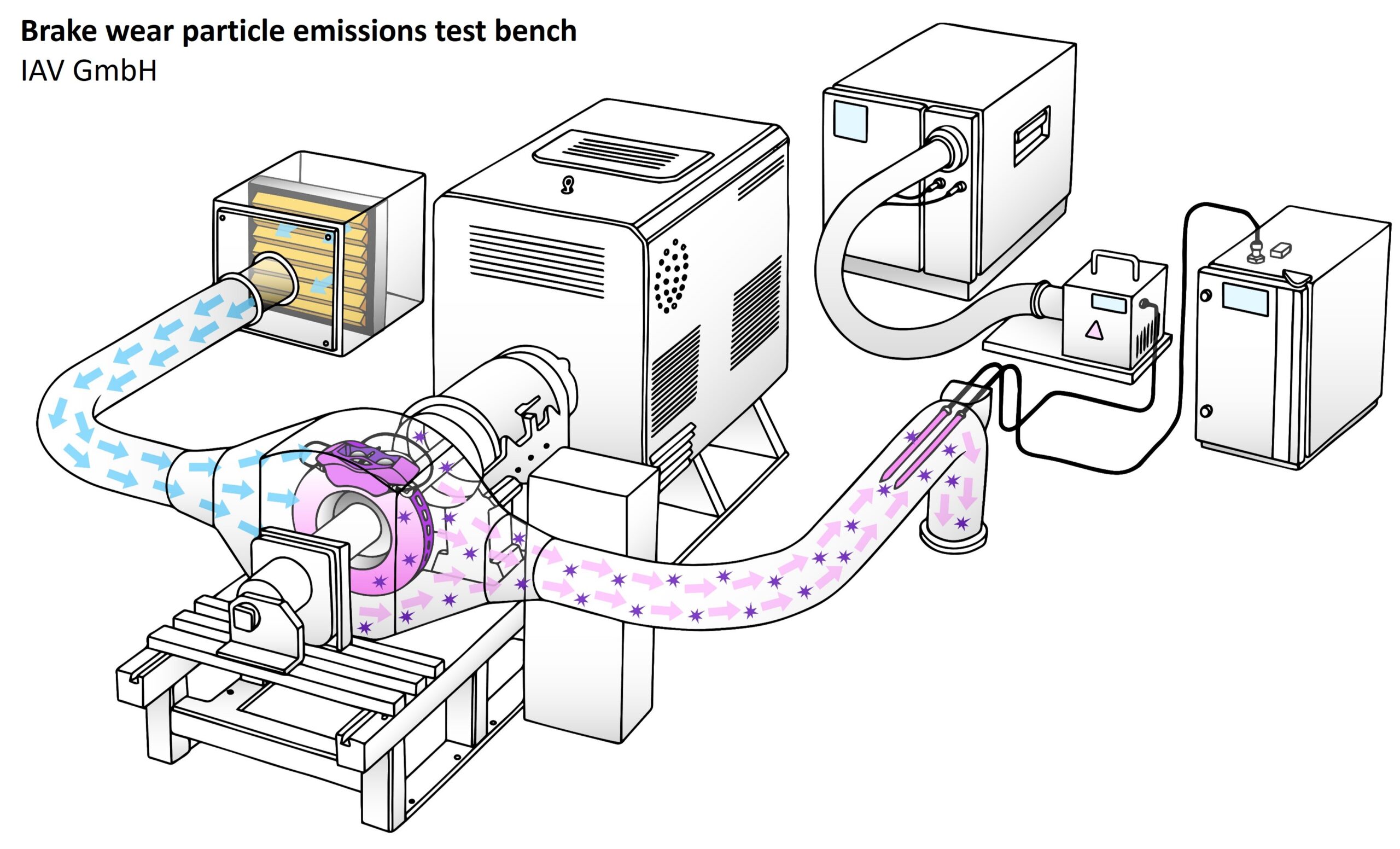Brake wear particles in focus: New test benches in Gifhorn
09.11.2022 —
The danger is smaller than 0.01 millimetres but is increasingly becoming the focus of political attention: Brake wear particles are considered toxic, but unlike vehicle emissions, they are not yet subject to regulation by the European Union (EU). This is set to change from 2025 – and IAV is preparing for growing testing needs with its own test centre.

“Brakes now cause more particulate emissions than vehicles powered by internal combustion engines via their exhaust gases,” says Dr. David Hesse, development engineer in the Foundation Brake team at IAV. “This is largely due to the increasing electrification of powertrains and the steady decline in the proportion of internal combustion engine emissions due to more efficient units as well as exhaust aftertreatment systems as a result of regulation.”
The new brake test rigs at the Gifhorn site enable the tech solution provider to carry out measurements and performance tests in accordance with the latest specifications. Among other things, this enables IAV to precisely evaluate the number, mass and size of the fine and ultra-fine particles generated by friction during every braking process.
EU legislation on brake emissions in progress
As part of the Particle Measurement Programme (PMP) of the Economic Commission for Europe (UNECE), work has been underway since 2016 on a test procedure for determining brake particle emissions on the test bench. A new global technical regulation (UN GTR) based on this procedure is expected to be adopted in the first quarter of 2023. According to unofficial information, the latest proposal for “Euro 7” legislation includes mass limits of 7 milligrams per kilometre (PM10).
IAV is currently working on a new topic in this area. In addition to measurements and investigations of particulate emissions from friction partners, IAV’s new test centre for brakes also offers an assessment of particle dispersion based on CFD simulations and experimental analyses; a derivation and identification of potentials for reducing and avoiding emissions as well as concepts for innovative solutions.
«Whether through the use of alternative materials for discs and pads, novel brake concepts or, for example, regenerative braking in electric cars - current trends in development promise great potential for reducing emissions.»
— Development engineer in the Foundation Brake team at IAV



